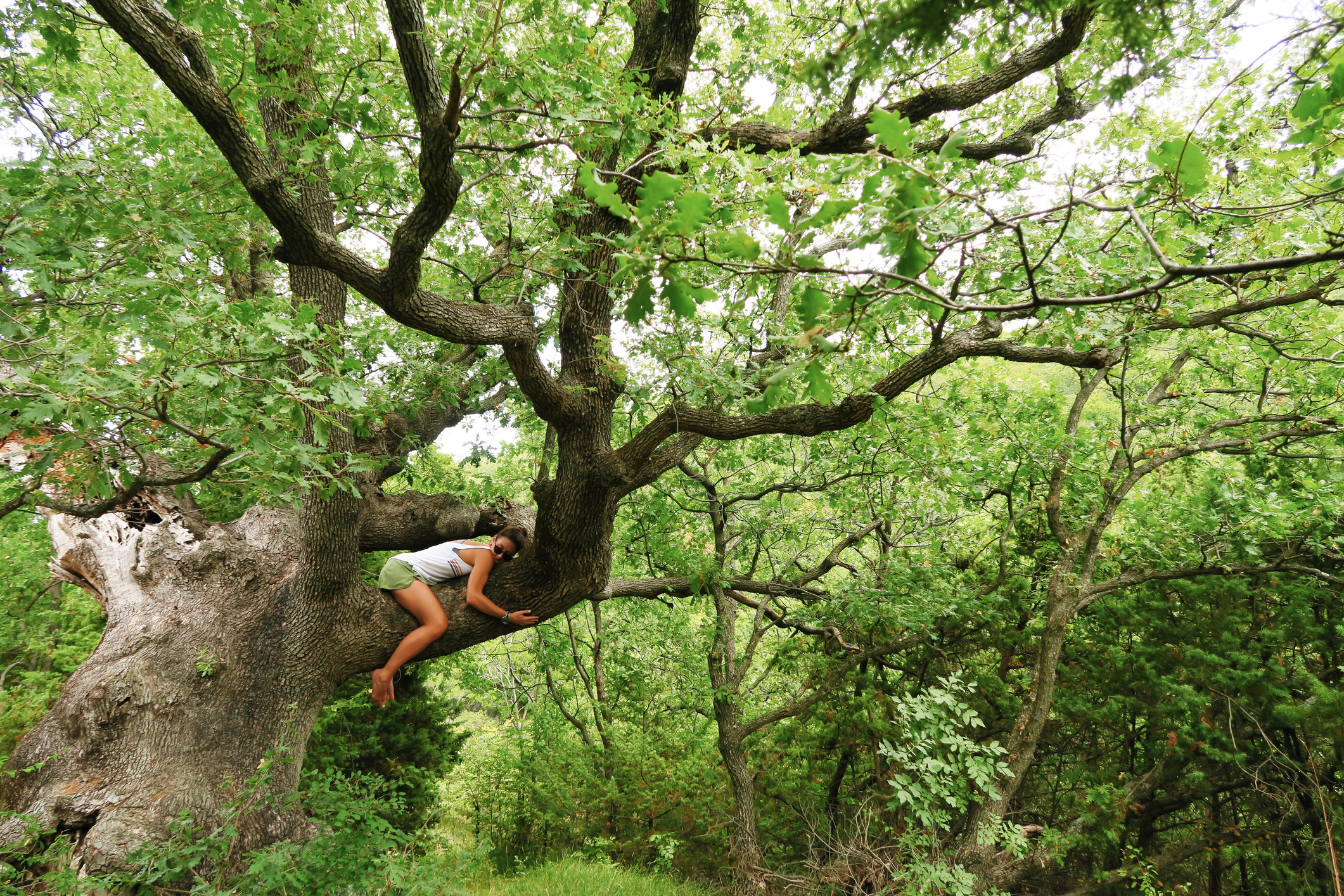How to Climb a Tree Safely – Coming Down is the Hard Bit

Each tree is unique. As a result, there is no universal way to climb trees because each presents a different challenge of its own.
However, there are still some fundamental principles that you should keep in mind while climbing any tree. They not only ensure a successful climb but take your personal safety into account as well.
We will go over these principles here:
PREPARING TO CLIMB THE TREE

Your number one objective is to be safe. Thoroughly examine the tree before beginning to climb and confirm that it’s healthy, in good shape, and that it has plenty of strong footholds.
Never climb a tree that is swaying excessively to one side, has thin or sparse branches, has missing bark, has cut roots on the ground, or that is rotting and hollow with large cracks. As a general rule of thumb, the tree’s limbs should be six inches or more in width so that they can support your weight.

Select the safest height on the tree that you can climb to and do not succeed this. Generally speaking, it is less safe where the thick branches stop forming or where the trunk narrows to less than four inches. If the trunk is thinner than this, it could sway in the wind and you could possibly slip and fall off.
It’s also important that you wear appropriate clothing. Loose clothing should be avoided so that it doesn’t snag while you climb. Any accessories that you have around your neck, such as necklaces or a compass, should be removed before climbing.
Finally, wear comfortable shoes that offer plenty of traction. It’s actually wiser to climb a tree barefoot than it is to climb with shoes that have poor traction.
Last but not least, check to see if there are any dangers nearby. These could include large rocks that you could fall on if you slipped off, any signs of bee nests or animal habitations, or nearby power lines. In wet conditions the tree is more likely to be slippery, and in cold and windy conditions the branches could be more easily broken.
ASCENDING THE TREE

Now that you have selected the tree you want to climb, are adequately prepared for it, and have determined that it is safe to climb, you can begin your ascent. Remember not to go past the maximum safe height you identified earlier.
Grab the lowest strong branch while wrapping your other arm around the trunk.
If you can’t reach the first branch, it’s probably not the safest idea to climb, but if you wish to proceed anyway (for navigational purposes perhaps) and you feel you can reach the lowest branch with a little force, you can run at the tree, jump, and use one foot on the trunk to push upwards. Then, you can grab the branch and wrap your arm around the trunk.

Now that you are firmly grasping the first strong branch, you can climb on top of that branch. As you are grabbing the branch from underneath it, you’ll need to pull yourself up. Pull until your elbows are on the branch, inching your way up the trunk at the same time, and then use upper body strength to get your stomach onto it.
Alternatively, you can grab the branch with both of your hands and then swing one of your legs over it. Then, wrap your arms firmly around it so you don’t fall. The leg swing method should only be used as a backup option because it increases your chances of falling.
You can then move from branch to branch by utilizing the same techniques. Remember to avoid branches that are less than six inches in diameter because they are less likely to be able to hold your weight. Avoid climbing on any branches that are cracked, dead, or that have loose bark. It’s simply not worth taking the risk.
As a general rule of thumb, make sure that at least three of your limbs are always anchored to the tree. This way, you have a greater chance of catching yourself should you ever fall.

The higher you ascend, the less wise it becomes to use the leg swing method. If you fall while using the leg swing method on the lowest branch, you won’t fall very far. But the higher you go, the farther you will fall and any injuries sustained in the fall will be greater.
DESCENDING THE TREE

Once you’ve reached the maximum height you identified earlier, and have used that height to navigate or do whatever else you need to climb the tree for, it’s time to make your descent. Your descent must be no less cautious than your ascent.
While descending the tree, it’s important that your body is kept as close to the trunk as possible and that you keep in the upright position.
The closer you are to the trunk during your descent, the more stable you will be. If the trunk is small enough, you can even wrap your legs or arms around it to give you better traction.
It’s also wise to mimic your ascending path as closely as possible while you descend because you know that the branches you used for your ascent are strong enough to sustain your weight. It’s more difficult to see the branches while descending, so it’s good to avoid using a branch that you haven’t already used.
